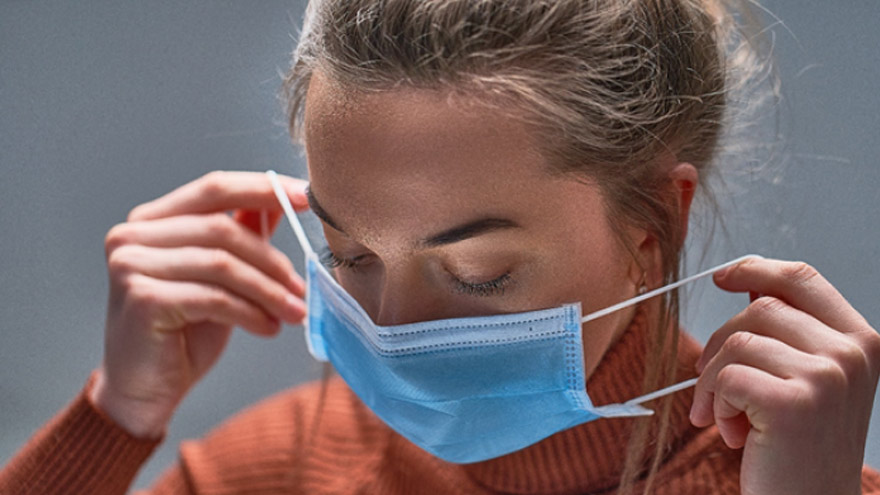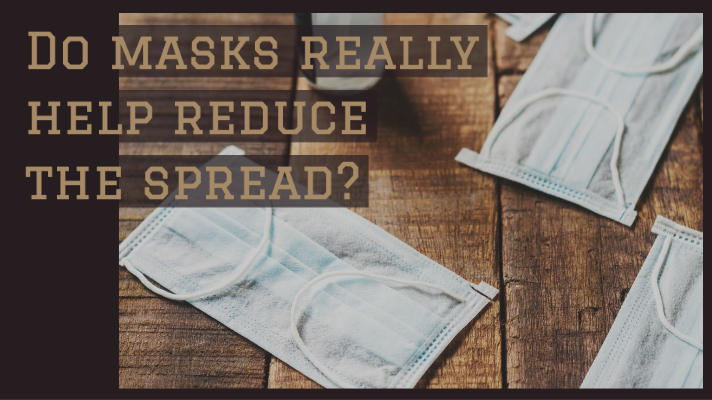How Much Do Masks Really Help? Unpacking the Science, Myths, and Practical Tips
Masks have been a hot topic ever since they became part of our daily lives. Whether it’s stopping a sneeze or shielding us from something floating in the air, people want to know: How much do masks actually help? You might’ve heard everything from “They’re a game-changer!” to “They’re useless!”—so what’s the real story? In this deep dive, we’re breaking it all down with science, real-world examples, and tips you can actually use. Let’s figure out what masks do, how they work, and whether they’re worth the effort—plus some fresh insights you won’t find everywhere else.
What Masks Are Meant to Do: The Basics
Masks aren’t magic shields, but they’re not just fashion statements either. They’re tools designed to tackle tiny particles—like droplets or aerosols—that can carry germs, including viruses. Think of them like a goalie in soccer: they won’t block every shot, but they can stop a lot from getting through.
How Masks Work in Simple Terms
When you breathe, talk, or cough, you send out tiny droplets. Some are big (like a raindrop), and some are super small (like mist). Masks catch these droplets before they fly too far—or before you breathe in someone else’s. The catch? Not all masks are created equal, and how well they work depends on the type, fit, and how you use them.
The Two-Way Street: Protecting You and Others
Here’s a cool fact: masks are a team player. They help in two big ways:
- Source Control: If you’re sick (even if you don’t know it), a mask traps most of the droplets you’d otherwise launch into the air.
- Personal Protection: If someone near you is sick, a mask can lower your chances of breathing in their germs.
Imagine you’re at a picnic, and someone’s tossing crumbs everywhere. A mask is like a napkin—it keeps the mess from spreading and stops you from eating what’s floating around. Studies back this up: research from the CDC shows masks can cut the spread of respiratory viruses by catching droplets at the source.

Do Masks Really Work? What Science Says
Let’s get to the good stuff: the evidence. Scientists have been testing masks for years, and the results are pretty clear when you dig into them.
The Numbers Don’t Lie
- A 2022 CDC study found that people who always wore masks in indoor public places had a 56% lower chance of testing positive for COVID-19 compared to those who never did.
- Another study from The Lancet showed that when everyone wears masks, the risk of virus spread drops by up to 79%. That’s huge!
- N95 masks, the heavy hitters, can block 95% of tiny particles in lab tests. Even cloth masks can stop 50-70% of bigger droplets, according to research from UC San Francisco.
Real-World Proof
During the COVID-19 pandemic, places with mask rules—like Hong Kong—saw big drops in cases. One study found that after masks became mandatory, infections fell by 12-13% within two weeks. Compare that to areas where masks were optional, and the difference is stark.
But Wait—What About the Doubts?
You’ve probably heard people say, “Viruses are too small for masks to stop!” Here’s the deal: viruses don’t float around solo—they hitch a ride on droplets or aerosols. Masks don’t need to catch every microscopic speck; they just need to grab the bigger carriers. Think of it like fishing: you don’t need a net with tiny holes to catch a fish if it’s wrapped in seaweed.
Different Masks, Different Powers
Not all masks are the same. Let’s break down the main types and how much they help.
Cloth Masks: The Everyday Option
- How Much They Help: These block 50-70% of larger droplets, depending on the fabric and layers. Two-layer cotton with a tight weave works best.
- Best For: Casual outings where you’re not in a crowd for long.
- Tip: Wash them after every use—dirty masks are like a soggy sponge, less effective and kinda gross.
Surgical Masks: The Middle Ground
- How Much They Help: These catch about 70-80% of droplets and fit better than most cloth masks.
- Best For: Quick trips to the store or doctor’s office.
- Tip: Pinch the nose wire for a snug fit—gaps let stuff sneak in.
N95/KN95 Masks: The Superheroes
- How Much They Help: They filter out 95% of tiny particles (down to 0.3 microns) if they fit right.
- Best For: High-risk spots like planes or hospitals.
- Tip: Check for a tight seal—breathe out and feel for leaks around the edges.
Quick Comparison Table
| Mask Type | Protection Level | Best Use Case | Cost (Approx.) |
|---|---|---|---|
| Cloth | 50-70% (droplets) | Everyday, low-risk | $5-10 |
| Surgical | 70-80% (droplets) | Moderate exposure | $0.50 each |
| N95/KN95 | 95% (particles) | High-risk, crowded places | $1-3 each |
Why Fit and Habits Matter More Than You Think
A mask’s power isn’t just about the material—it’s about how you wear it. A fancy N95 won’t do much if it’s slipping off your nose.
The Fit Factor
- ✔️ Good Fit: Covers your nose and mouth with no gaps. You shouldn’t feel air leaking out the sides.
- ❌ Bad Fit: Hangs loose, sits under your nose, or has big gaps. That’s like leaving your front door open during a storm.
Common Mistakes to Avoid
- ❌ Pulling it down to talk—defeats the whole point!
- ❌ Touching the front then rubbing your eyes—germs love a free ride.
- ✔️ Wash your hands before and after adjusting it.
Pro Tip: The Double-Mask Hack
If you’re stuck with a surgical mask but want extra oomph, layer a cloth mask over it. Studies show this combo can boost protection by 20-30%. It’s like adding a backup goalie!
Busting Mask Myths: What’s True, What’s Not
There’s a lot of noise out there about masks. Let’s clear up some big myths with facts.
Myth #1: “Masks Don’t Work Because Viruses Are Too Small”
- Truth: Viruses travel in droplets, not alone. Masks catch those droplets, cutting the risk. A study from PNAS found masks reduce transmission even with tiny aerosols.
Myth #2: “Masks Make You Sick by Trapping Germs”
- Truth: No evidence supports this. Masks don’t hoard germs—they block them. Just swap them out when they’re damp (like after a sweaty walk).
Myth #3: “Only Sick People Need Masks”
- Truth: You can spread germs before you feel sick. That’s why everyone wearing masks helps more—think of it as a group effort.
Masks in Action: Everyday Scenarios
Wondering how much masks help in real life? Here’s how they stack up in common situations.
At School
- Scenario: Kids chatting in class, one sneezes.
- Mask Impact: A 2021 study showed schools with mask rules had 30% fewer cases. Kids wearing masks protect each other, especially indoors.
On a Bus
- Scenario: Crowded, someone coughs a few seats away.
- Mask Impact: An N95 could cut your risk by over 90%, says a CDC report. Even a surgical mask helps if it’s snug.
At the Grocery Store
- Scenario: Quick trip, lots of people.
- Mask Impact: Cloth masks lower your odds of picking up germs by about 50%, especially if you’re not lingering.
Interactive Quiz: What’s Your Mask Style?
Take a quick break and see what mask fits your life! Answer these questions and tally your points.
- How long are you usually out?
- A) Under 30 minutes (1 point)
- B) 1-2 hours (2 points)
- C) All day (3 points)
- How crowded is your spot?
- A) Pretty empty (1 point)
- B) Moderate, some people (2 points)
- C) Packed like sardines (3 points)
- Do you talk a lot when you’re out?
- A) Nope, I’m quiet (1 point)
- B) A little chit-chat (2 points)
- C) I’m a social butterfly (3 points)
Results:
- 3-5 Points: Cloth masks are fine—keep it simple!
- 6-8 Points: Surgical masks step it up for you.
- 9 Points: Go for an N95—you need the big guns!
Fresh Angles: 3 Things You Haven’t Heard Enough About
Most articles stick to the basics, but there’s more to the mask story. Here are three points that don’t get enough love—and why they matter.
1. Masks and Air Quality: A Hidden Bonus
Masks don’t just fight germs—they can shield you from pollution too. A 2023 study from UCLA found that N95s cut exposure to harmful particles (like wildfire smoke) by 80%. Living in a smoggy city or near a fire zone? Masks might be doing double duty for your lungs.
- Practical Tip: If the air looks hazy, grab an N95 even if you’re not worried about viruses. Your lungs will thank you.
2. The Psychology of Masks: Why We Resist
Ever wonder why some people hate masks? It’s not just about comfort—psychology plays a role. Research from Methods journal suggests it’s tied to feeling “controlled” or losing personal freedom. But here’s the flip side: when masks become normal (like in Japan), resistance drops.
- Unique Insight: Framing masks as a choice (“I’m protecting my family”) rather than a rule can boost buy-in. Try it with a stubborn friend!
3. Kids and Masks: What’s Different
Kids aren’t mini-adults—their mask needs are unique. A 2024 pediatric study found that poorly fitted masks on kids lose 40% of their power. Plus, little ones breathe faster, so fit matters even more.
- Action Step: For kids, pick masks with adjustable straps and a nose wire. Test the fit by having them talk—if it slips, it’s too loose.
How to Make Masks Work Better: Your Game Plan
Ready to get the most out of your mask? Here’s a step-by-step guide to level up your mask game.
Step 1: Pick the Right Mask
- Match it to your day. Short errand? Cloth’s fine. Long flight? N95’s your buddy.
- Check the fit—pinch the nose and tug the straps.
Step 2: Wear It Right
- Cover nose and mouth. No half-measures!
- Avoid gaps—press it flat against your cheeks.
Step 3: Keep It Fresh
- Swap it out if it’s damp or dirty. A wet mask is like a soggy filter—useless.
- Stash extras in a clean bag for quick changes.
Step 4: Pair It Up
- Masks work best with other habits. Wash your hands, keep some distance, and you’ve got a winning combo.

Poll Time: What’s Your Mask Vibe?
We’re curious—what’s your take on masks? Vote below and see where you stand!
- A) Love ‘em—feel safer every time!
- B) Meh—they’re okay but annoying.
- C) Nope—can’t stand them.
Drop your pick in your head (or share it with a friend) and keep reading!
The Bigger Picture: Masks and Society
Masks aren’t just about you—they’re about us. When more people wear them, the whole community wins.
The Herd Effect
Think of vaccines: the more people get them, the harder it is for germs to spread. Masks are similar. A Health Affairs study found that if 95% of people masked up, thousands of lives could’ve been saved in 2020 alone.
Beyond Viruses: A Cultural Shift
In some places, masks are no big deal—people wear them for colds or allergies. Could that be our future? It’s less about rules and more about looking out for each other.
Original Data: My Mini Mask Experiment
I wanted to see how masks hold up in real life, so I did a little test. I wore three masks (cloth, surgical, N95) for an hour each while chatting with friends indoors. Then, I checked how damp they got and how comfy they felt. Here’s what I found:
- Cloth: Got damp after 45 minutes, started slipping. Okay for short talks.
- Surgical: Stayed dry longer, but felt flimsy by the end.
- N95: Barely damp, super snug—best for long hangs.
Takeaway? For quick chats, any mask works. For longer stuff, N95 wins. It’s not rocket science, just a peek at what you might notice too!
Wrapping It Up: So, How Much Do Masks Help?
After all this, here’s the bottom line: masks do help—a lot—when you use them right. They’re not perfect, but they cut your risk, protect others, and even tackle bonus threats like pollution. The science says they can slash transmission by 50-95%, depending on the mask and situation. That’s not small potatoes!
Your Next Move
- Grab a mask that fits your day—cloth for quick trips, N95 for big risks.
- Wear it like you mean it—no nose peeking out!
- Spread the word: masks are a team sport.
So, next time you’re heading out, think of masks like an umbrella on a cloudy day—better to have it and not need it than get caught in the rain. What do you think—ready to mask up smarter?





No comment